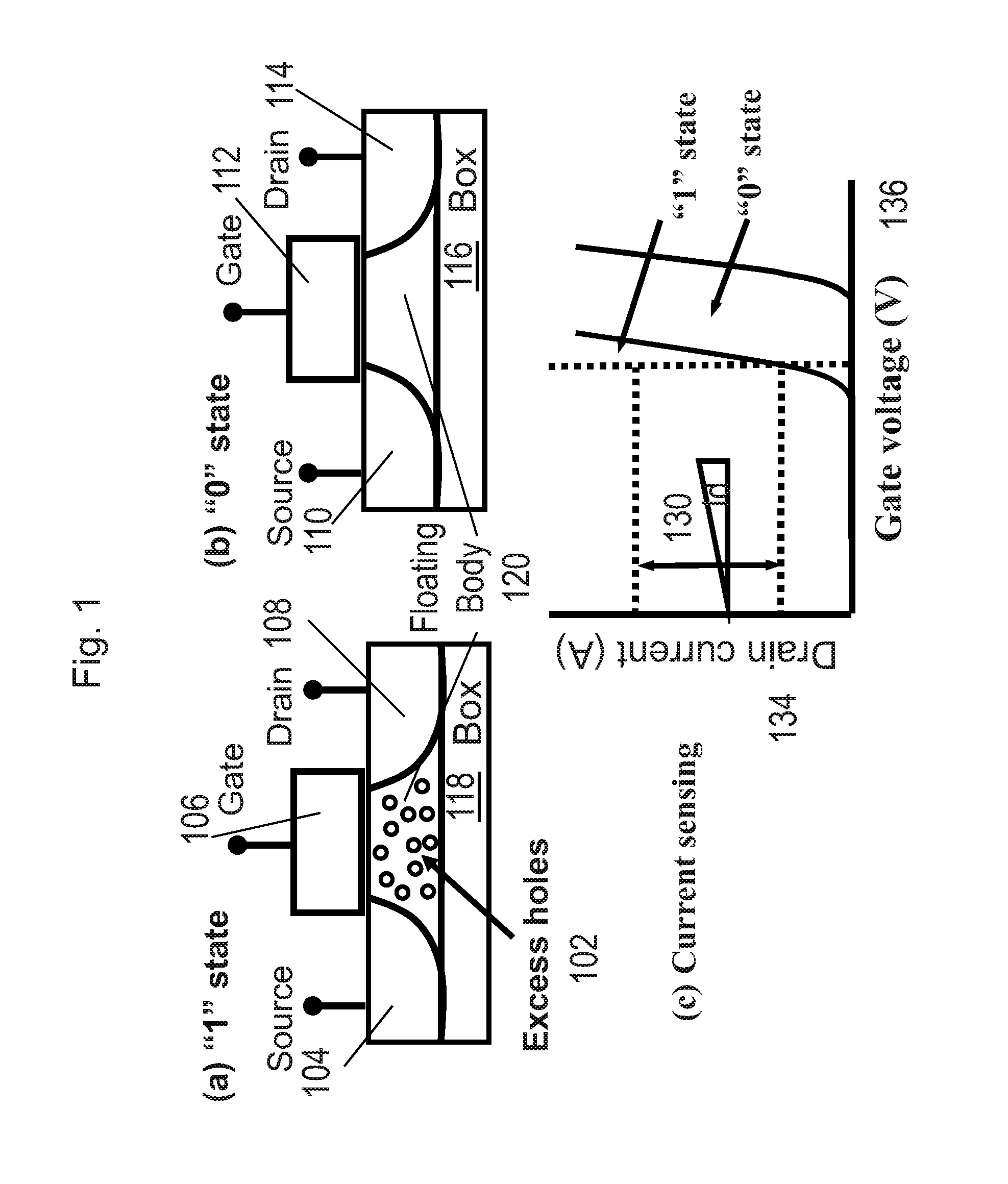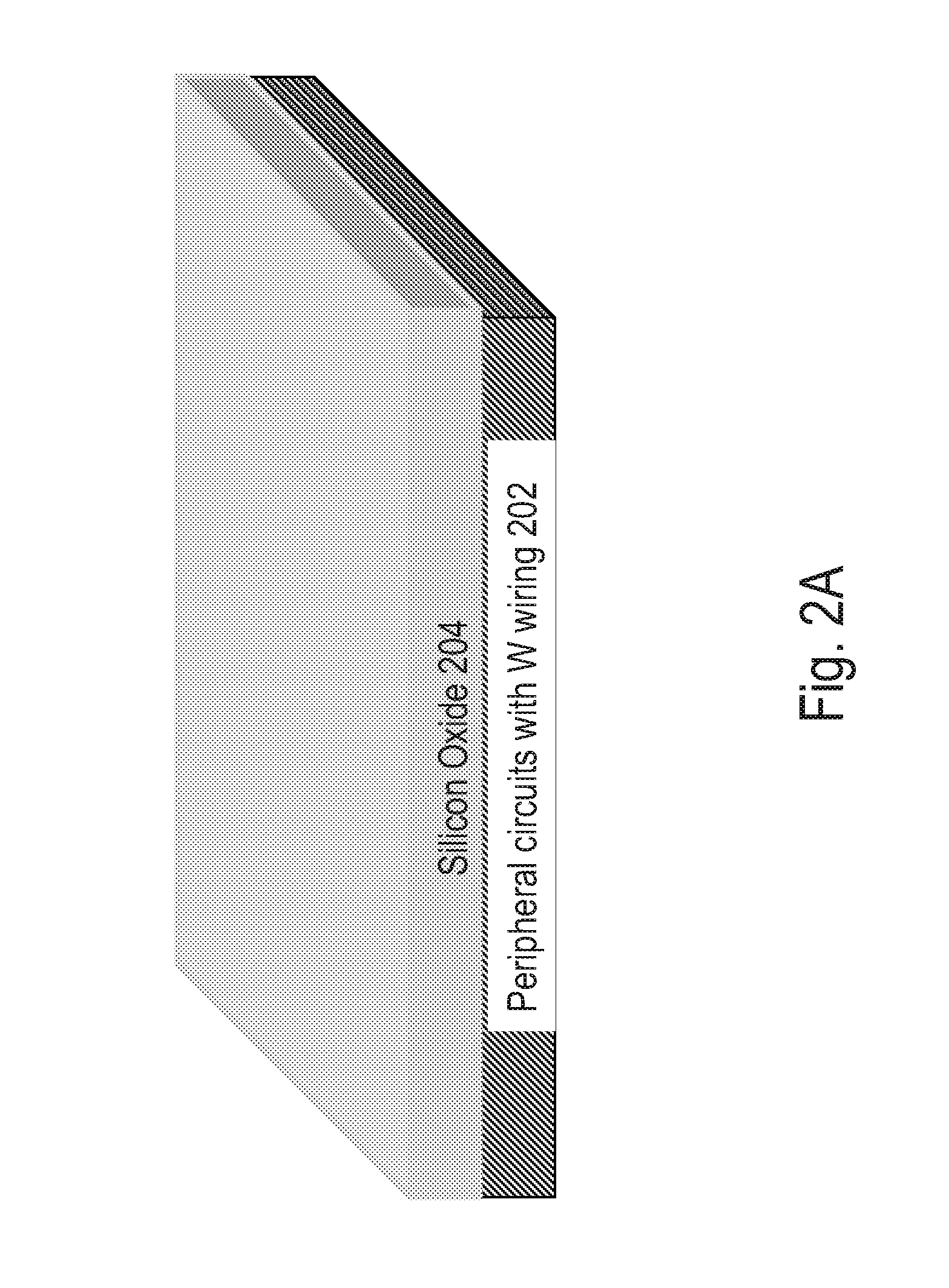Method of maintaining a memory state
a memory state and memory technology, applied in the field of methods, can solve the problems of many barriers to practical implementation of 3d stacked chips, copper or aluminum wiring levels, and deformation of the performance of the wires (interconnects) that connect together transistors, and achieve the effect of reducing the number of transistors
- Summary
- Abstract
- Description
- Claims
- Application Information
AI Technical Summary
Benefits of technology
Problems solved by technology
Method used
Image
Examples
Embodiment Construction
[0042]Embodiments of the invention are now described with reference to the indicated figures, it being appreciated that the figures illustrate the subject matter not to scale or to measure. Many figures describe process flows for building devices. These process flows, which may be a sequence of steps for building a device, may have many structures, numerals and labels that may be common between two or more adjacent steps. In such cases, some labels, numerals and structures used for a certain step's figure may have been described in previous steps' figures.
[0043]The entirety of U.S. Pat. No. 8,379,458 and U.S. Pat. No. 8,273,610 are incorporated herein by reference.
Section 1: Monolithic 3D DRAM.
[0044]This Section describes some novel monolithic 3D Dynamic Random Access Memories (DRAMs). Some embodiments of this invention may involve floating body DRAM. Background information on floating body DRAM and its operation is given in “Floating Body RAM Technology and its Scalability to 32 nm...
PUM
 Login to View More
Login to View More Abstract
Description
Claims
Application Information
 Login to View More
Login to View More - R&D
- Intellectual Property
- Life Sciences
- Materials
- Tech Scout
- Unparalleled Data Quality
- Higher Quality Content
- 60% Fewer Hallucinations
Browse by: Latest US Patents, China's latest patents, Technical Efficacy Thesaurus, Application Domain, Technology Topic, Popular Technical Reports.
© 2025 PatSnap. All rights reserved.Legal|Privacy policy|Modern Slavery Act Transparency Statement|Sitemap|About US| Contact US: help@patsnap.com



